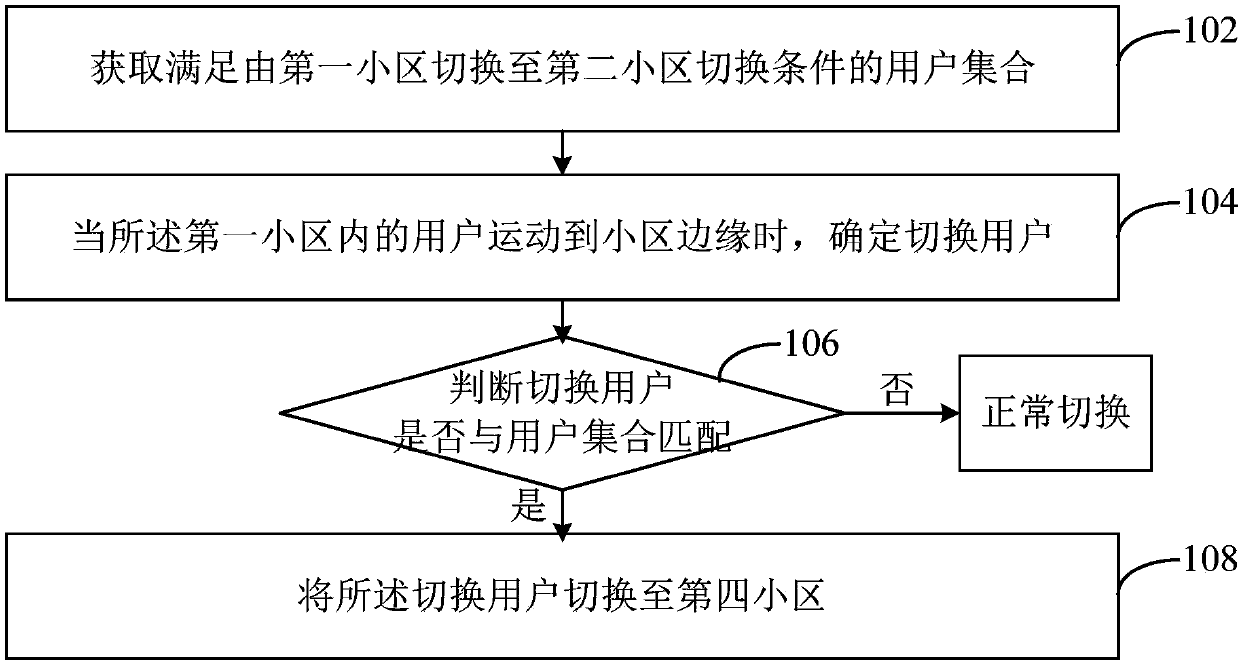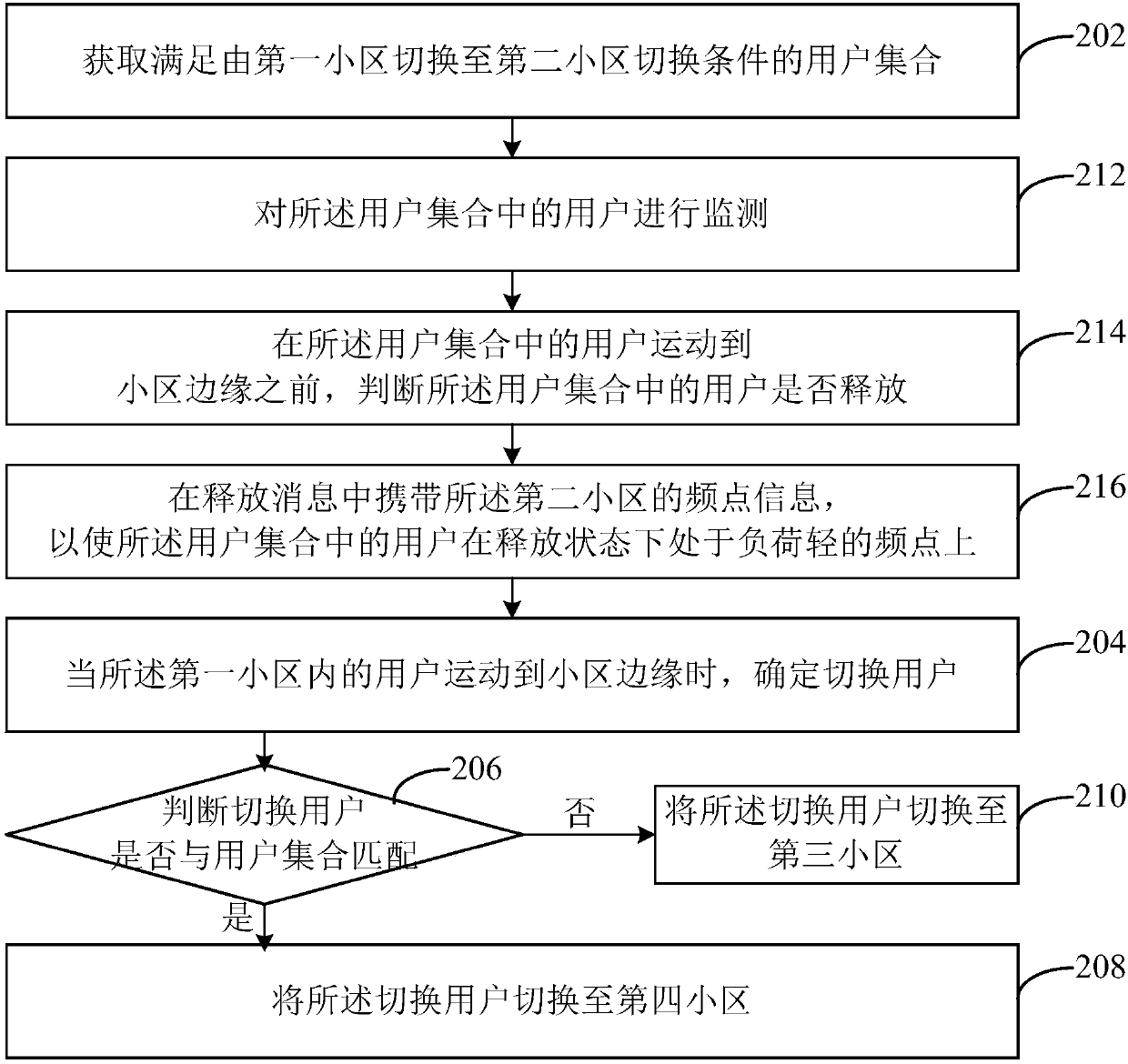Load balancing method and device
A load balancing and cell technology, applied in the field of communication, can solve problems such as frequent switching times, high switching failure rate, and affecting user experience, and achieve the effect of reducing the risk of switching failure, reducing the number of switching times, and reducing user disconnection
- Summary
- Abstract
- Description
- Claims
- Application Information
AI Technical Summary
Problems solved by technology
Method used
Image
Examples
Embodiment 1
[0042] refer to figure 1 , shows a flowchart of steps of a load balancing method in Embodiment 1 of the present invention. In this embodiment, the load balancing method can be, but is not limited to, applied to a private high-speed rail network covered by a double-layer network. For example, the first cell and the second cell may be two cells on a two-layer network, and the first cell and the second cell are cells with completely the same coverage.
[0043] Wherein, the load balancing method includes:
[0044] Step 102, acquiring a set of users satisfying the handover condition from the first cell to the second cell.
[0045] In this embodiment, the set of users satisfying the handover condition from the first cell to the second cell is acquired, that is, the set of users satisfying the load balancing handover condition is acquired. Wherein, it should be noted that, in this embodiment, in step 102, only a set of users satisfying the load balancing handover condition is dete...
Embodiment 2
[0055] refer to figure 2 , shows a flowchart of steps of a load balancing method in Embodiment 2 of the present invention. In this embodiment, the load balancing method includes:
[0056] Step 202, acquiring a set of users satisfying the handover condition from the first cell to the second cell.
[0057] In this embodiment, the acquisition of the set of users satisfying the handover condition from the first cell to the second cell is to determine the users in the first cell that meet the load balancing handover condition. Wherein, the first cell and the second cell are cells with the same coverage.
[0058] Preferably, a feasible way to obtain a user set may be as follows: according to the physical resource block utilization rate and / or the number of users of the first cell and the second cell, determine the users who meet the handover condition from the first cell to the second cell gather.
[0059] Step 204, when the user in the first cell moves to the edge of the cell,...
Embodiment 3
[0078] In combination with the foregoing embodiments, this embodiment takes load balancing switching in a high-speed rail scene as an example to describe the load balancing method.
[0079] refer to image 3 , which shows a schematic diagram of a high-speed rail private network covered by a two-layer network in Embodiment 3 of the present invention. Such as image 3 , the high-speed rail private network is configured with a two-layer network (a first-layer network and a second-layer network), and adjacent co-frequency adjacent cells. Wherein, the two-layer network can use two frequency points in the same frequency band, assuming that the frequency points of the two-layer network are F1 and F2 respectively. Specifically, Cell1 and Cell3 may be two adjacent adjacent cells of the same frequency, Cell3 is a different-frequency and same-coverage cell of Cell1, and Cell4 is a different-frequency and same-coverage cell of Cell3; the frequency points of the Cell1 and Cell3 are the s...
PUM
 Login to View More
Login to View More Abstract
Description
Claims
Application Information
 Login to View More
Login to View More - R&D
- Intellectual Property
- Life Sciences
- Materials
- Tech Scout
- Unparalleled Data Quality
- Higher Quality Content
- 60% Fewer Hallucinations
Browse by: Latest US Patents, China's latest patents, Technical Efficacy Thesaurus, Application Domain, Technology Topic, Popular Technical Reports.
© 2025 PatSnap. All rights reserved.Legal|Privacy policy|Modern Slavery Act Transparency Statement|Sitemap|About US| Contact US: help@patsnap.com



